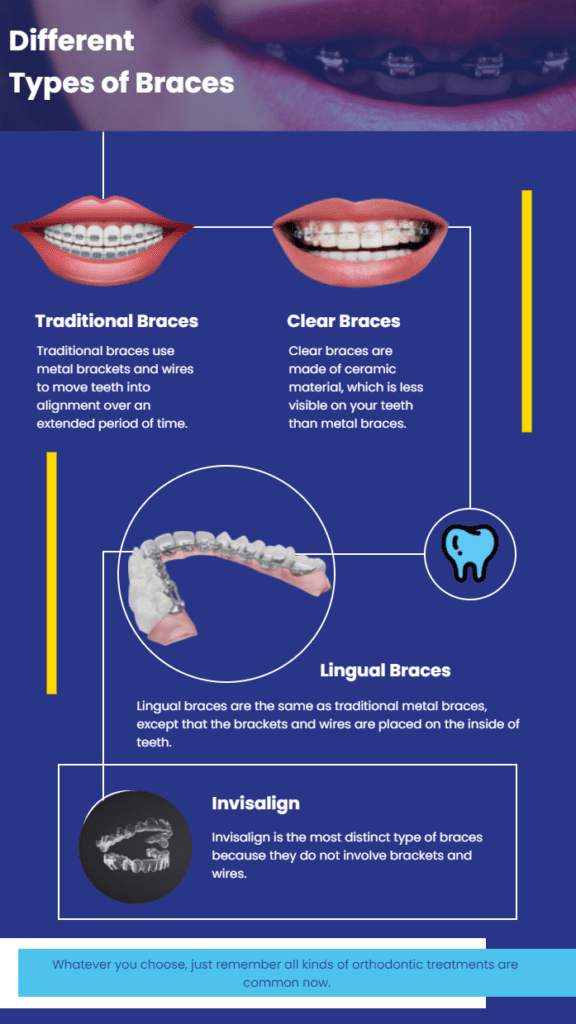Comprehensive Guide to Orthodontics Treatments for Dealing With Oral Misalignments
In the realm of orthodontics, the journey to achieving a flawlessly aligned smile involves a myriad of procedures customized to fix oral misalignments. From standard dental braces to undetectable aligners and even surgical options, the field of orthodontics uses a variety of solutions to resolve varying degrees of oral irregularities. Recognizing the details of each procedure, including their mechanisms, benefits, and possible disadvantages, is critical in making educated choices about one's orthodontic therapy. As we browse with the comprehensive guide to orthodontic treatments for fixing dental imbalances, the complex information of each technique will unravel, shedding light on the course towards a functional and unified oral alignment.
Orthodontic Procedures Introduction

Along with traditional braces and clear aligners, orthodontists may likewise advise other treatments like headgear, palatal expanders, or retainers to resolve specific alignment concerns (cumming orthodontics). These treatments are customized per client's one-of-a-kind demands and might include a combination of treatments to accomplish the wanted results. Routine modifications and tracking are essential parts of orthodontic treatment to make sure progress is on track and to make any type of essential modifications along the road. By undertaking orthodontic treatments, people can not just attain a straighter grin however additionally enhance their total dental health and function.
Standard Dental Braces: Just How They Function
When taking into consideration orthodontic treatments for dental misalignments, traditional braces stand apart as a time-tested technique for remedying teeth positioning. Conventional braces consist of brackets, cables, and bands that collaborate to use continual pressure on the teeth, slowly moving them into the wanted alignment. The brackets are connected to the teeth making use of an unique adhesive, and the cables are threaded through the braces. By readjusting the stress of the cables, orthodontists can manage the direction and pressure applied to each tooth, directing them right into appropriate alignment over time.
As pressure is applied to the teeth with the dental braces, the bone bordering the teeth is reshaped to support the brand-new tooth settings. Clients will need regular adjustments at the orthodontist's office to ensure the dental braces continue to use the appropriate pressure for efficient teeth movement.
Undetectable Aligners: Benefits And Drawbacks
These clear, personalized trays are basically undetectable when put on, making them an attractive option for individuals looking for an extra visually pleasing orthodontic therapy. Clients can get rid of the aligners prior to visit this page consuming or cleaning their teeth, reducing the threat of food getting stuck in the device and simplifying the cleansing process.

Surgical Orthodontic Options
Surgical treatments in orthodontics present sensible options for addressing complex oral imbalances that may not be properly fixed with standard orthodontic therapies. While invisible aligners and conventional braces can remedy numerous orthodontic problems, specific instances require surgical intervention to accomplish optimum outcomes. Surgical orthodontic choices are typically recommended for serious malocclusions, considerable jaw discrepancies, and situations where the underlying bone structure needs alteration to attain correct alignment.
One common surgical orthodontic treatment is orthognathic surgery, which includes rearranging the jaws to deal with useful concerns such as trouble chewing or speaking. This surgery is typically carried out in collaboration with an orthodontist that aids line up the teeth before and after the procedure. Surgical orthodontics may additionally involve treatments to subject influenced teeth, eliminate excess gum cells, or improve the jawbone to create a much more harmonious facial account.
Prior to thinking about surgical orthodontic choices, patients undergo an extensive evaluation to establish the requirement and potential benefits of such interventions. cumming invisalign. While surgical treatment may seem challenging, it can considerably improve both the feature and appearances of the smile in cases where conventional orthodontic treatments fail
Retainers and Post-Treatment Care

Post-treatment treatment includes adhering to the orthodontist's instructions carefully. This may consist of proper oral health methods, participating in follow-up appointments, and putting on the retainers as suggested. Failure to abide with post-treatment care instructions can cause regression, where the teeth slowly return towards their original positions. Constant retainer wear, good dental hygiene, and normal dental exams are important for maintaining the outcomes accomplished with orthodontic surgical procedure and making certain the long-term stability of the fixed dental placement.
Conclusion
In final thought, orthodontic procedures supply various options for correcting dental imbalances. Traditional dental braces make use of steel braces and wires to shift teeth right into appropriate alignment. Unnoticeable aligners provide an even more discreet option but may not be ideal for all instances. Surgical orthodontic alternatives are readily available for much more extreme imbalances. Retainers are frequently used post-treatment to maintain the brand-new alignment. In general, orthodontic treatments can properly boost oral health and wellness and visual appearance.
As we browse via the comprehensive guide to orthodontic click procedures for remedying dental imbalances, the detailed information of each approach will certainly unfold, dropping light on the course towards a functional and harmonious dental placement. - cumming invisalign
One of the most common orthodontic treatments is the usage of dental braces, which consist of metal brackets and wires that use mild pressure to gradually move teeth into the wanted setting.When thinking about orthodontic therapies for dental misalignments, conventional braces stand out as a tried and true approach for correcting teeth positioning. Furthermore, invisible aligners might not be suitable for complicated orthodontic issues that need even more significant teeth movement, as they are normally advised for mild to modest cases. Retainers are personalized orthodontic gadgets designed to hold teeth in their dealt with settings after the completion of orthodontic treatment.